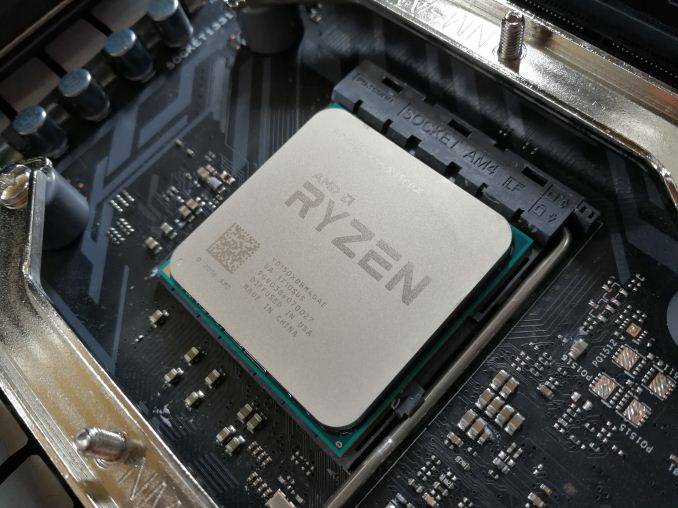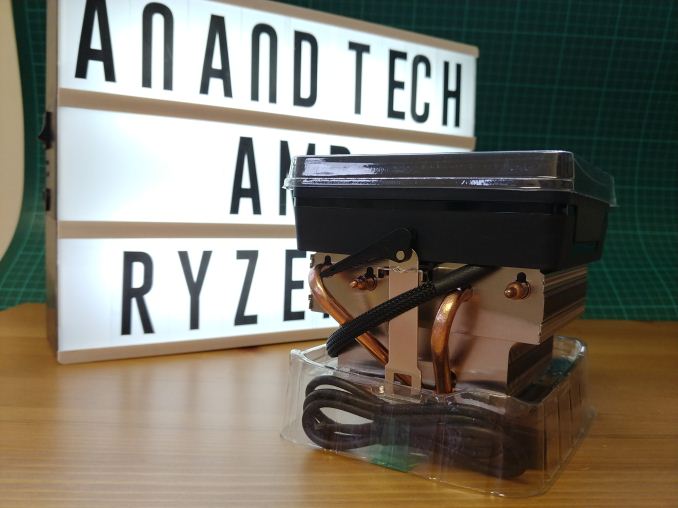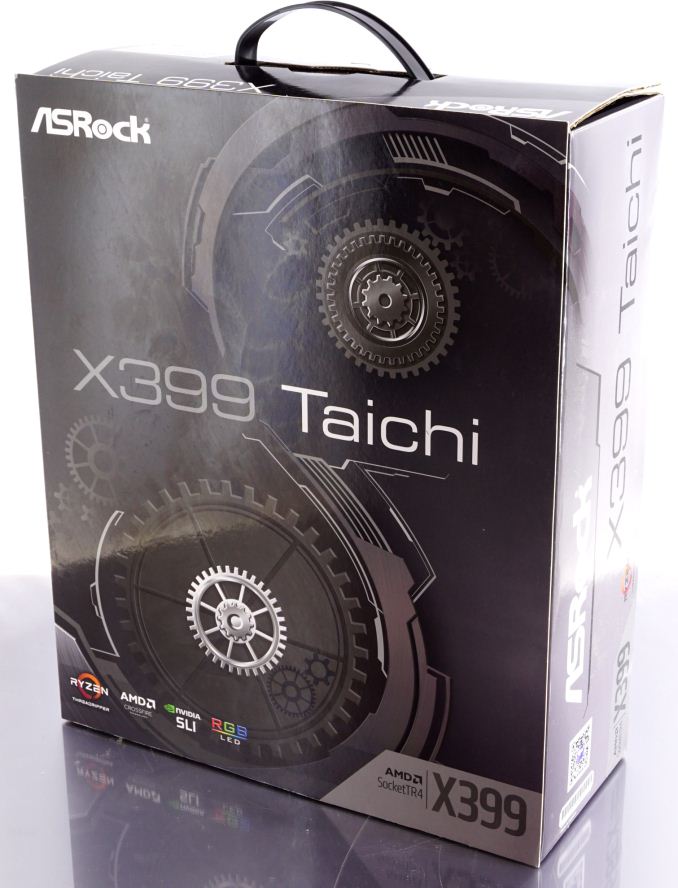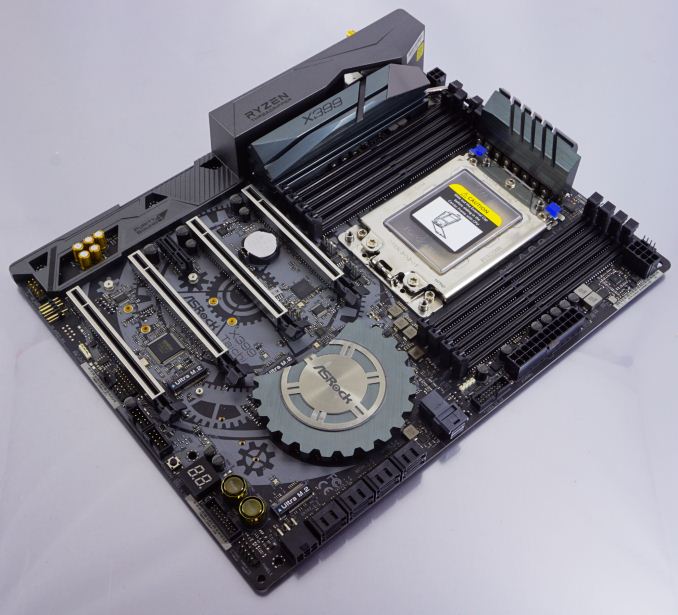The ASRock X399 Taichi Motherboard Review: Cost-Effective Threadripper
by E. Fylladitakis on October 26, 2018 8:00 AM EST- Posted in
- Motherboards
- AMD
- ASRock
- ThreadRipper
- X399
_678x452.png)
It has been over a year after the introduction of the Ryzen Threadripper processor and still the available compatible motherboards number around a dozen. ASRock is the company that offers the largest number of AMD X399 motherboards and they are merely three.
It is the ASRock X399 Taichi that we will be having a look at today. The ATX version of the Taichi is the most affordable AMD X399 motherboard available at the time of this review, retailing for $320 ($280 after rebate). Although the retail price of the ASRock X399 Taichi is nearly $100 lower than the second least expensive X399 motherboard we reviewed to this date, the specifications of the motherboard remain impressive. We are having a closer look at the motherboard and identify how ASRock managed to achieve this low price and what the X399 Taichi is missing compared to the competition.
| Recommended Reading on AMD Ryzen | |||
| 2700X and 2600X CPU Review |
2400G and 2200G APU Review |
Threadripper 2 2990WX Review |
Best CPUs |
 |
 |
%20-%20Copya_678x452.jpg) |
 |
ASRock X399 Taichi Overview
Unlike most motherboards, ASRock does not focus the marketing of the X399 Taichi on any specific group of users. The company's marketing efforts are generalized, hinting that their intent is to promote the X399 Taichi as a general-purpose design that would satisfy the widest user base.
A quick look at the motherboard's features and specifications suggests that the X399 Taichi is hardly different than its more expensive counterparts. It still has four full-size PCIe slots that support up to quad SLI/Crossfire, eight SATA connectors, three M.2 connectors, and even an U.2 port. We also find that it is using the same main subsystem chipsets, such as the Realtek ALC 1220 codec for sound and the Intel I211-AT NICs for dual LAN. Even the power circuitry is basically the same as that used in more expensive models, with an eight plus three phase power delivery design for the CPU and its SoC.
ASRock obviously did not manage to reduce the retail price of the motherboard by means of witchcraft, nor they are selling it at a loss. A closer look at the motherboard reveals that it does not have any of the newest features that we have seen on more advanced models. There is dual Gigabit LAN but no 10G NIC. There is 802.11ac Wi-Fi but no 802.11ad WiGig. There are headers for common 12V RGB LED strips but not for digital LED products. By avoiding the implementation of top-of-the-line features, ASRock's engineers managed to reduce the manufacturing cost of the X399 Taichi significantly without removing any of its core features and/or reducing the motherboard's quality or capacity.
The ASRock X399 Taichi is not the fastest AMD X399 motherboard that we have tested to this date either. As we will see in the following pages of this review, the main reason behind that is that the automated overclocking features of the motherboard are not as aggressive as they are on other motherboards. The ASRock X399 Taichi still does boost the processor's frequency by default but is more conservative in doing so, making it slightly slower than other products out-of-the-box. ASRock's engineers probably wanted to favour stability over performance on this particular implementation. Nevertheless, it is still just as capable as its more expensive counterparts when manual overclocking takes place.












29 Comments
View All Comments
The_Assimilator - Friday, October 26, 2018 - link
Board Features/"In The Box" claims that you get Crossfire bridges with this board, but that's not reflected in the picture, plus bridgeless Crossfire has been a thing for years.Pretty luxurious of Asrock to include a 4-way SLI bridge, though... even if SLI is dead with RTX.
GreenReaper - Sunday, October 28, 2018 - link
I think the points just go through the board and the attachment plugs can go on either side, Maybe to store them in transit, or to discourage use of that slot because it gets disabled by the U.2 connector?Maryjohn0192 - Saturday, October 27, 2018 - link
good oneAntonErtl - Saturday, October 27, 2018 - link
I would have liked to see some information about ECC support. Does the board support it officially? Does the Linux kernel report that ECC is enabled if you supply ECC memory (and not if not)?kobblestown - Monday, October 29, 2018 - link
It does support ECC officially - that's what it says on the site and in the user manual. I have access to a TR machine with Asrock X399 Professional Gaming which is the same board as the Taichi but with a 10G Ethernet chip. The machine is equipped with 4x16GB ECC@2400MHz/s modules from Kingston. There are several BIOS options that seem related to ECC but there's no description of these options in the manual. Anyway, the kernel seems to be aware of the ECC. Here's a snippet from dmesg:EDAC amd64: Node 0: DRAM ECC enabled.
EDAC amd64: F17h detected (node 0).
EDAC MC: UMC0 chip selects:
EDAC amd64: MC: 0: 0MB 1: 0MB
EDAC amd64: MC: 2: 16383MB 3: 16383MB
EDAC amd64: MC: 4: 0MB 5: 0MB
EDAC amd64: MC: 6: 0MB 7: 0MB
EDAC MC: UMC1 chip selects:
EDAC amd64: MC: 0: 0MB 1: 0MB
EDAC amd64: MC: 2: 16383MB 3: 16383MB
EDAC amd64: MC: 4: 0MB 5: 0MB
EDAC amd64: MC: 6: 0MB 7: 0MB
EDAC amd64: using x8 syndromes.
EDAC amd64: MCT channel count: 2
EDAC MC0: Giving out device to module amd64_edac controller F17h: DEV 0000:00:18.3 (INTERRUPT)
EDAC amd64: Node 1: DRAM ECC enabled.
EDAC amd64: F17h detected (node 1).
EDAC MC: UMC0 chip selects:
EDAC amd64: MC: 0: 0MB 1: 0MB
EDAC amd64: MC: 2: 16383MB 3: 16383MB
EDAC amd64: MC: 4: 0MB 5: 0MB
EDAC amd64: MC: 6: 0MB 7: 0MB
EDAC MC: UMC1 chip selects:
EDAC amd64: MC: 0: 0MB 1: 0MB
EDAC amd64: MC: 2: 16383MB 3: 16383MB
EDAC amd64: MC: 4: 0MB 5: 0MB
EDAC amd64: MC: 6: 0MB 7: 0MB
EDAC amd64: using x8 syndromes.
EDAC amd64: MCT channel count: 2
EDAC MC1: Giving out device to module amd64_edac controller F17h: DEV 0000:00:19.3 (INTERRUPT)
EDAC PCI0: Giving out device to module amd64_edac controller EDAC PCI controller: DEV 0000:00:18.0 (POLLED)
AMD64 EDAC driver v3.5.0
CyrIng - Sunday, October 28, 2018 - link
What about Linux and FreeBSD?Can we have a review of Threadripper motherboards with some Kernel build benchmark for example?
kobblestown - Monday, October 29, 2018 - link
If you are interested in running Linux on TR you should check phoronix.com - they have benchmarks that are much more varied than what they do here.There is something else to note though - the experience has not been flawless for me. I snatched a 1920X at the time the 2990WX was announced a couple of months back for a great price that is no longer available and married it to an Asrock Fatal1ty X399 Professional Gaming with 4x8GB G.Skill 15-15-15-sth@3000MHz (not the machine from my post above). First of all, it takes ages to boot. That seem to be common for TR builds and is a bit annoying. But what annoys me the most is that the BIOS resets all settings every time you plug, unplug or change any PCIe/NVME device (not sure about the SATA since I rely on NVME entirely). The best approach is to save your settings (there are several save slots) and recall from there. Otherwise it's too much trouble because there are tons of options and most are not documented anywhere. I'm not even talking about overclocking - the machine is a beast even at stock freqs.
Also, you'd want to make sure that you run the latest BIOS/AGESA - for example the one the board came with did not allow for 3000MHz - only 2933 and 3066 (among others). The latest AGESA fixed this and my G.Skill which not validated for Ryzen works just fine. However, this latest version has some problem with the latest Linux kernels - for instance I couldn't run the Ubuntu 18.10 installer because of this kernel problem that can only be solved with custom compiled kernel (i.e. not with a boot option IIRC). OTOH, 18.04 runs just fine. I want to experiment with VGA passthrough and I have the hardware but haven't got the time yet. One thing to note is that all four network adapters (2x1G + 10G + WiFi) are in the same IOMMU group. It would have been nice to have the wired adapters in separate groups so I can assign them to different VMs but I think virtio-net will not break too much sweat on such a powerful machine.
CyrIng - Monday, October 29, 2018 - link
Thanks a lot for sharing this Linux experience.Phoenix is indeed a good Foss source but less hardware gifted as Anandtech.
As a System programmer, I would enjoy too see benchmarks dealing with Buildroot, FS squashing, cryptography support, big project compilation time and so on
Buying such hardware for a total of 1=3 $K claims à lot of details...
Regards
cyberguyz - Wednesday, October 31, 2018 - link
I have one of them. It works ok. Has problems running my GSkill TridentZ 3200 CL14 memory at XMP speeds without boosting memory voltage to 1.45v. Also it is a pain in the a$$ when it comes time to try out different settings since the only way to reset cmos is to open the system up and push a tiny little easy to miss button hear the onboard reset & power buttons. An external button like many of the competitors use would have been a real relief from that hassle.